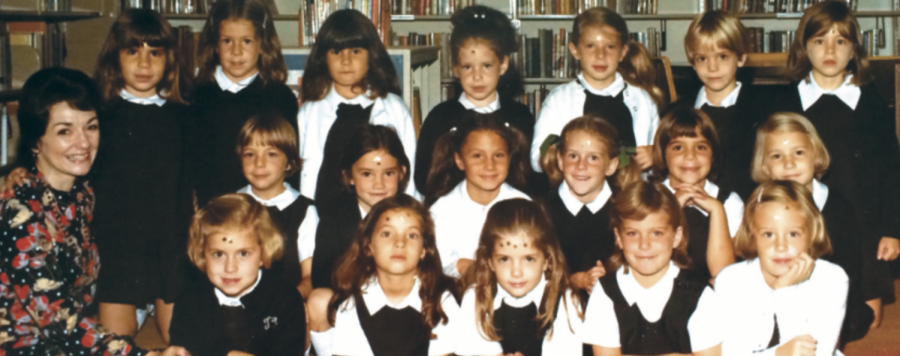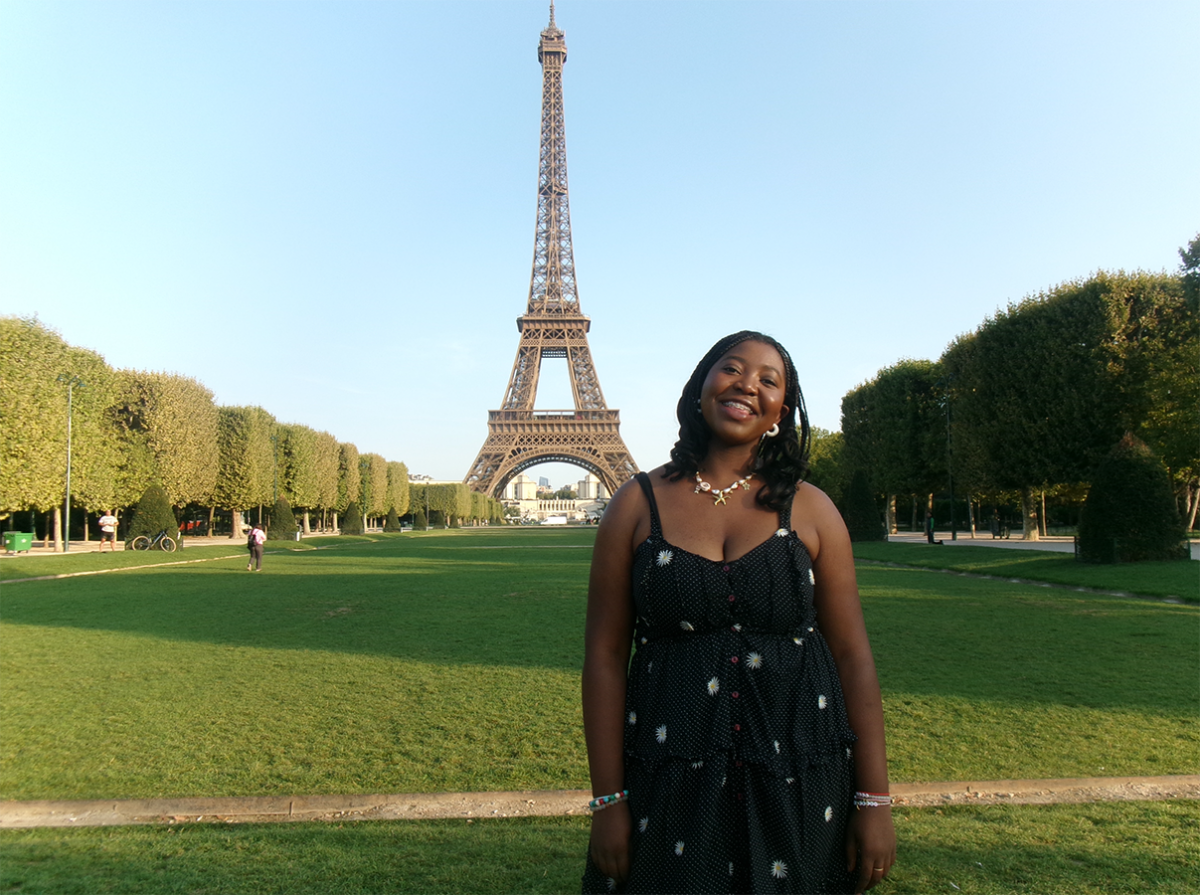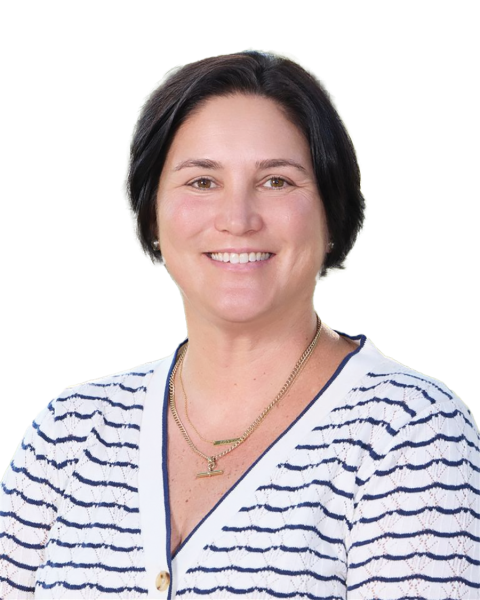Generations at Hockaday
Long lines of Daisies continue family legacies
Tiffany Borlaug Rubi ‘88 sits on the bottom row, next to her first grade teacher Mrs. Levering in 1973. photo provided by Tiffany Borlaug Rubi
March 2, 2021
Since Ela Hockaday founded Hockaday in 1913, mothers and grandmothers have sent their daughters to the school to let them grow up surrounded by the four Cornerstones: Courtesy, Character, Scholarship and Athletics. This tradition has encompassed multiple generations for four featured families: the Emanuelsons, the Phaneufs, the Rubis and the Swangos.
Family Ties
For Jennifer Cox ‘94, who attended Hockaday for 12 years like her grandmother and sisters, sending her daughter Grace Emanuelson to Hockaday was almost a no-brainer.
“It’s been a gift to see her embrace it in the ways that I did and ways that are all her own,” Cox said. “The school has changed a lot since I was last there in 1994, but it remains true to its core and I am proud to share the virtues Hockaday instills with Grace… It brings back memories, it has allowed me to reflect on my experiences in different ways, and I have a greater compassion for Grace’s hardships as well as joy for her accomplishments. It’s a true journey.”
Grace, a sophomore, has enjoyed walking through the same halls as her mother did.
“Sometimes I look around campus and wonder if my mom had once been in the same spot,” Grace said. “Maybe she too laughed with her friends outside of the lunchroom.”
Carrie Phaneuf ‘91, mom to both freshman Estee and senior Margot, commented on her decision to send both her daughters to Hockaday.
“I just kept thinking about how I cherished my time at Hockaday and that my heart was at Hockaday,” Phaneuf said. “I feel very strongly that Hockaday was the best thing my parents ever did for me and I wanted to give that same gift to my girls.”
Candace Campbell Swango ‘84 spoke about her own experience following her mother, Mary Katherine B Campbell ‘46, and later, that of her daughters: junior KK and Campbell, Class of ‘18.
“It’s been truly fun watching Campbell and KK grow in their separate endeavors at Hockaday, and it was especially different than mine and my mom’s experiences,” Swango said. “It was special to watch the girls learn with some of the same teachers that I had thirty-five years ago, Mr. Kramer being one of them.”
Tiffany Borlaug Rubi ‘88 spoke about her experience watching her daughter, junior Anne, go through Hockaday and start in Pre-K, following in her footsteps.
“It is very special to see my daughter go through Hockaday for fourteen years like I did,” Rubi said. “Some things are very similar – the approach to nurturing and challenging independent girls, but some things are very different – the structure/buildings and facilities, and technology and the course offerings.”
Changes over time
One of the main differences at Hockaday today is the end of the 16-year practice of “coordinate classes.” Between 1972 and 1988, for certain upper school classes, St. Marks and Hockaday students went to each other’s campuses. Classes like French, Psychology, Sociology, Government and Astronomy were shared.
Fun fact: at the start of the program in 1972, computers were outrageously expensive, so Hockaday and St. Mark’s split the cost of one. The computer was on St. Mark’s campus in the mornings and moved over to Hockaday’s campus in the afternoon. At one point, over 400 students shared classes between the two schools. This was only possible when Hockaday and St. Mark’s had the same schedule, allowing students to ride the bus over for their Hockaday class. Students even ate in each other’s lunchrooms before heading back to their respective campuses.
Of course, the tradition of the St. Mark’s/ Hockaday musical lives on every year. A few other things have changed: Tarry House was a seniors- only lounge, the bookstore was on the second floor between the Upper and Middle School hallways, the Liza Lee Academic Research Center (more commonly known as the ARC) had not been built, Kief was still the faithful security guard and the skirts may have been a bit longer.
Multiple former Hockaday students who have seen their daughters walk through the school have commented on the increased rigor since they have attended. Cox ‘94 talked about her view on Hockaday’s rigor now:
“From an academic standpoint, Hockaday seems more rigorous to me than when I was a student. The work load seems greater and more arduous, the classes seem more advanced and the pace seems quicker. That, again, is from a parent’s lens. Perhaps I studied just as hard as Grace – but I don’t think so!”
But the heart of Hockaday and what makes it special has stayed the same. One of the greatest examples, the epitome and culmination of Hockaday: Graduation Terrace, Commencement, long white dresses and pastel hats covered in flowers.
Cox talked about what the school means to her.
“I love Hockaday because it was one of the largest constants in my formative years. Family, friends and Hockaday – for 12 years,” Cox said.
“It was such a special place and I can’t really even tell you why. Maybe the history of it was always so alluring to me. Visiting Great Hall with my grandmother when I was 5, seeing pictures of the old campus. By the time I got there, I was programmed to love it.”










